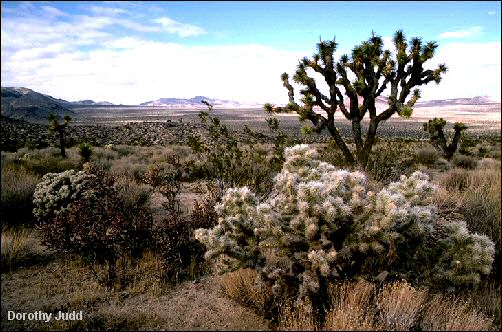

An icon of one of our sister deserts is in trouble. Virtually everyone recognizes the Joshua Tree, symbol of the Mojave Desert, and Joshua Tree National Park swarms with tourists anxious to see the bizarre giant yuccas. The visual impact will soon be diminished, however, for dead and dying trees are spread across the landscape. Plants are dying at some 10 times their normal rate.
What happened? As so often is the case, several things. In 2002, less than 1 inch of precipitation was received. Admittedly, Mojave Desert plants and animals are well adapted for a desert climate, but when the normal rainfall is in the vicinity of 4.5 inches per year, less than 1 inch impacts the most hardy. In this case, though, apparently it's not the direct impact on the Joshua Tree that's led to disaster, but the reaction of dehydrated rabbits and rodents, desperately gnawing into the yuccas' trunks to procure water from the pithy interior.
Is extinction threatened? No, but it may be
generations before the scenes of only a few years ago
return.

Contributor: Arthur H. Harris, Laboratory for Environmental Biology, Centennial Museum, University of Texas at El Paso.
Desert Diary is a joint production of the Centennial Museum and KTEP National Public Radio at the University of Texas at El Paso.

Mojave Desert scene. A Joshua Tree is silhouetted against the sky, while several others can be seen in the landscape. Photograph by Dorothy Judd, © California Academy of Sciences.
Wilson, J. Battle for scarce desert water proves deadly to Joshua Trees. Los Angeles Times, 7 Jul 2003.